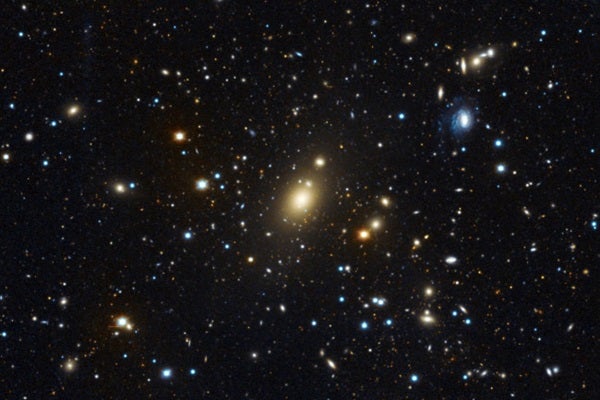The Largest Black Hole Ever Measured Is 40 Billion Times the Mass of the Sun
Astronomers said the biggest black hole is 40bn times the mass of the sun, or around two_thirds the mass of all stars in Milky Way. The said black hole lies inside a giant galaxy that seems to have possibly formed through the merger of at least eight smaller galaxies.
Abell 85 galaxy cluster is centered on a giant elliptical galaxy Holm 15A. To find the mass of the central black hole in the galaxy, a group of astronomers created a model and snapped a picture of the stars in Holm 15A’s orbit. The discovery regarding the nature of the larger cluster was described in a paper that the team recently submitted to The Astrophysical Journal but which was first uploaded to the arXiv preprint site.

Making monster galaxies
Elliptical galaxy can be made when two spirals galaxies for instance Andromeda galaxy and our Milky way galaxy merge. These elliptical galaxies can merge and subsequently merge again to form even bigger elliptical galaxies particularly in regions such as clusters of galaxies. The central black holes of these galaxies merged to birth the larger black holes and the gravity of these bigger blackholes can force massive areas of nearby stars towards the confines of this new born galaxy.
This generates an extra-large elliptical galaxy which infrequently has enough gas for star creation; therefore, the result is a rather exposed central region after its black hole expels other stars. They are termed “cored galaxies” by the astronomers, large cored galaxies often reside in the centers of galaxy clusters.
The ‘largest known elliptical galaxy, Holm 15A, resident in its home galaxy cluster’, had to be made from the merging of two much larger ‘cressed elliptical galaxies’, the authors of the new study have argued. It means that Holm 15A must have possibly evolved from the joining of eight other spiral galaxies that approximate the size of our own galaxy. Ellipstical galaxies originate from pairs of spiral galaxies, cored elliptical galaxies originate from pairs of those ellipticals and Holm 15A is created by a pair of cored galaxies. This series of mergers also created the black hole at the center of the system, A monster black hole nearly as large as our solar system that contains mass equivalent to 40 billion suns.
Explaining quasars
The identification of a supermassive black hole that is considered to be the biggest one detected up to date makes the researchers enthusiastic.
It is interesting to imagine such a black hole; Jens Thomas, an astronomer from the Max Planck Institute for Extraterrestrial Physics in Germany who was involved in the study says, “Just imagining a black hole that is so huge is cool. ”
The finding, however, is also rather fascinating as it solidifies our knowledge regarding quasars—distant galaxies containing monstrously large central black holes that emit a brilliant light when they feed—on ponderable quantities of matter. Astronomers do to quasars and came to the realization that some of these distant quasars had to be extremely bright black holes with at least 10 billion solar masses.
As study author, Roberto Saglia of the Max Planck Institute said: “Finally, we were able to identify one nearby and that was sort of good indication that our idea as to how quasars work and how the accretion on black holes can explain it makes sense. ”
Do not forget to share your opinion with us to provide you with the best posts !




0 Comments